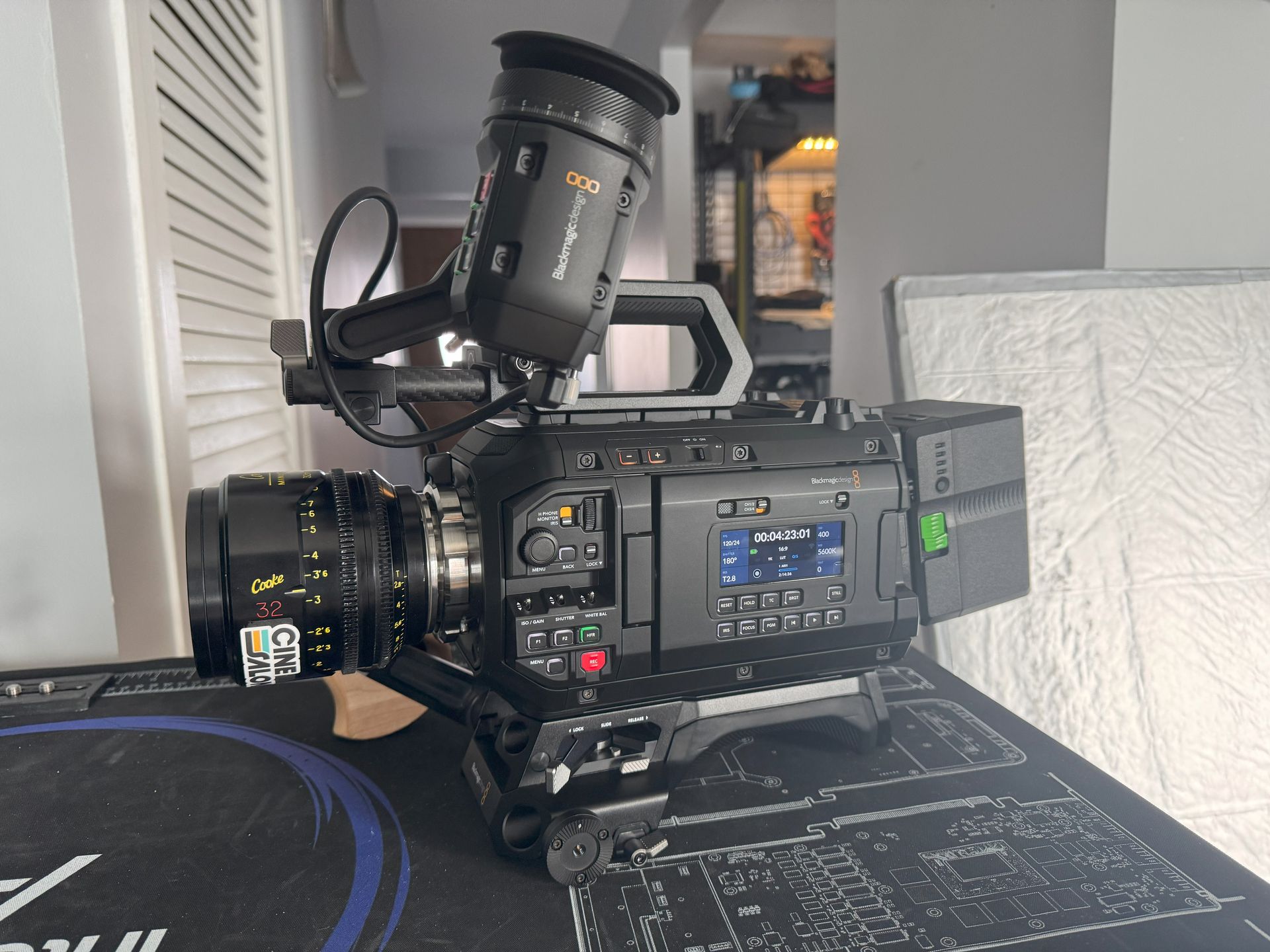
We've developed a list of ten crucial stages for successful video SEO to assist you in getting started. Doing these actions may increase the chance that your video will show up on page one. You must first do keyword research.
Video SEO relies on keyword investigation, just like other content types. Finding the most popular and relevant keywords is essential. Include them in the post's heading, body copy, and tags. The search engine's algorithm will use this information to find the video in response to a query.
The next step is to produce compelling videos that will keep people watching. Your video's SEO will improve as visitors spend more time engaged with it. Your movies should also be optimized for mobile viewing and other devices. Maximizing your video's information is a further vital step.
Your video's metadata consists of the title, description, and tags. Ensure the titles and descriptions you use to contain your target keywords are clear and detailed. Put your movies on the map by labeling them with searchable tags.
If you want more people to see and interact with your films, you should share them on social media and other channels. Put the videos on your site, blog, and social media. You may expand the reach of your videos by asking your valued viewers to like, comment, and share them.
In addition, you should optimize your video hosting platform. Whether using YouTube, Vimeo, or another platform, ensure your videos are optimized for SEO. It includes using relevant and descriptive titles, descriptions, tags, custom thumbnails, and captions. These ten steps for effective video SEO can improve engagement and search engine ranking. So, start optimizing your video content today and see the results for yourself!
The Importance of Video SEO
The value of video content It is impossible to exaggerate the importance of search engine optimization. Businesses may expand their reach and gain more exposure by optimizing their video content for search engines.
Optimized videos are more likely to be noticed by potential consumers. They will show up in relevant searches, on relevant video platforms, and in relevant social media feeds. With right optimization, you may get:
- Improved visibility in search engine results.
- Higher click-through rates.
- Improved user engagement metrics.
- Better user experience.
- Increased website traffic.
- Enhanced brand awareness.
- Greater lead generation potential.
- Improved conversion rates.
- Competitive advantage over rivals.
- Long-term benefits and ROI.
Video SEO promotes user engagement with the videos in marketing campaigns. It may enhance visitors' time on websites or social media channels since it is more interesting than text or photos. As a result, this can potentially increase users' interest and the brand's popularity. Video content is one of the most effective methods when discussing popularizing a brand.
Businesses may boost their brand awareness and solidify their positions. Some people keep producing high-quality videos that are also educational and interesting. This point might be especially significant for companies operating in particularly competitive markets.
Conversion rates can also be increased with the use of video content. Businesses may increase their conversion rates and revenue by producing engaging video content. Companies that rely heavily on Internet sales or lead generation may find this particularly useful.
In conclusion, organizations that engage in video SEO might gain an edge in the market. While more and more people are watching videos online, many companies still haven't warmed up to the idea.
Ten Key Steps for Effective Video SEO
1 - Do Keyword Research
The first essential step for effective video SEO is to conduct keyword research. This step involves identifying the keywords and phrases your target audience is searching for online. You can optimize your video content for these keywords and improve its visibility and search engine ranking.
To begin your keyword research, consider your video content's topics and themes. Then, use keyword research tools such as Keyword Planner, Keywords Everywhere, or SEMrush, to find related and LSI keywords. These are more likely to help your video rank higher on search engine results pages.
Once you've identified your target keywords, incorporate them into your title description. Your video title should be descriptive and catchy and include your target keywords.
The description should provide more information about your video's content. Try to include your keywords in a natural and informative way. You should also tag your video with relevant keywords and categories to help it appear in search results for those terms. In addition, you should use long phrases in content. These are less competitive but still relevant to your video content.
Overall, doing keyword research is an essential step for effective video SEO. You can optimize your video content for search engines by identifying and using relevant keywords and phrases. Choose keywords wisely and incorporate them into your video title, description, and tags. Use long-tail keywords to get a more targeted audience.
2 - Create High-Quality Video Content
Creating high-quality video content is an essential step for effective video SEO. The quality of your video content can impact how long viewers watch your videos, how engaged they are, and how likely they are to share your content. You can improve your video's search engine ranking by creating informative and engaging videos. It will help you get more views.
First and foremost, it's essential to focus on the content of your videos. Your videos should provide value to your audience. It can be through educational, informative, or entertaining content. You should also ensure that your videos are relevant to your target audience and address their needs and interests.
In addition, the production quality of your videos can impact their effectiveness. While you don't need a professional studio or equipment, you should aim for high-quality visuals and audio. Ensure your videos are well-lit, have clear audio, and are filmed in a stable and visually appealing environment.
It's also essential to optimize your videos for different platforms and devices. Mobile devices are getting popular for video viewing. Make sure your videos are optimized for smaller screens and slower internet connections. Consider using captions or subtitles to make your videos more accessible and reach viewers who cannot listen to audio.
Lastly, consider the length of your videos. At the same time, longer videos can provide more value and information to your valued viewers. Shorter videos are more likely to be watched in their entirety. Aim for a balance between informative and engaging content. Keep your videos as concise as possible without sacrificing quality.
3 - Incorporate Video into Your Website and Blog
Incorporating video into your website and blog is essential for effective video SEO. By embedding videos into your blog, you can increase your video's watch time and improve its search engine ranking. Here are some reasons why incorporating video into your website and blog is essential:
- Videos can help increase the time viewers spend on your website. You can encourage viewers to stay on your website longer by providing engaging and informative video content.
- Videos can improve the user experience of your website. Videos can make your website more interactive. It helps you provide an engaging and dynamic user experience.
- Videos can help communicate complex information more effectively. Videos can be a powerful tool for explaining complex concepts or demonstrating how to perform specific tasks.
- Videos can improve the search engine ranking of your website. Incorporating relevant video content into your website can enhance your website's relevance. It will also increase the authority in the search engine's eyes. By getting more traffic, you can get more recognition worldwide.
Video SEO requires adding videos to your website and blog. Embed videos into your website, optimized, and provide compelling video to boost ranking. Arrange your films into a video library with correct and relevant metadata to make them simpler to search.
4 - Optimize Video Metadata
Optimizing your video metadata is another essential step for effective video SEO. Video metadata includes the title, description, tags, and other data that boosts search engine rankings. Optimizing your video metadata can improve your video's visibility and search engine ranking.
To optimize your video metadata, start with your video title. Your title should be clear and descriptive and include your target keywords. The title is the first thing viewers see in search results when they find your video. Ensure it accurately reflects your video's content and catches their attention.
Next, focus on your video description. Your description should summarize your video's content and include your target keywords. Use the report to provide more information about your video, including what viewers can expect to learn or gain from watching it. You should also include links to your website to help viewers learn more about your business.
Tags are another essential element of your video metadata. Tags help search engines categorize your video and make it easier to find for all type of viewers. Use relevant tags that accurately describe the content of your video. Include specific keywords and categories relevant to your industry or niche.
In addition to these elements, you can also use custom thumbnails and captions to optimize it. Custom thumbnails can make your videos more visually appealing. It helps them stand out in search results. Captions can also improve the accessibility of your videos.
5 - Use Custom Thumbnails and Captions
Using custom thumbnails and captions is another essential step for effective video SEO. Custom thumbnails and captions can help make your videos more engaging and accessible to viewers. Using these elements, you can improve your video's search engine ranking and attract more viewers.
Custom thumbnails represent your video content and are used as a preview image in search results and video platforms. A custom thumbnail can help your video stand out from other search results and attract more clicks. When creating a custom thumbnail, choose an image that accurately represents your video's content. You can add text or graphics to your thumbnail to make it more eye-catching.
Captions or subtitles are another critical element of effective video SEO. Captions or subtitles can make your videos more accessible to viewers who are deaf or hard of hearing. They can also improve the engagement of your videos by allowing viewers to watch them without sound. Captions or subtitles can also help search engines understand the content of your video. It makes it more likely to appear in search results for relevant keywords.
When creating captions or subtitles, ensure they accurately reflect your video's content and are easy to read. Use clear and concise language and avoid jargon or technical terms that may be difficult for viewers to understand. Closed captions, which viewers may toggle on or off, can boost video engagement and user experience.
Video SEO requires specific thumbnails and subtitles. Personalized thumbnails and captions can boost search rankings and viewership. Ensure your custom thumbnails, captions, or subtitles appropriately depict your video's content. Doing so can increase your video's search engine ranking and viewership.

6 - Promote Your Videos on Social Media
Promoting your videos on social media is essential for effective video SEO. Social media platforms are a great way to reach a wider audience and increase the visibility and engagement of your videos. Promoting your videos on social media can attract more viewers and improve your search engine ranking.
To promote your videos on social media, identify the platforms where your target audience is most active. Consider using platforms like Facebook, Instagram, or LinkedIn to reach different audiences. It will help you to engage with them differently.
Next, share your videos on your social media profiles and pages. When sharing your videos, including the following:
- A clear and catchy headline.
- A summary of your video's content.
- A link to your video.
You can also use hashtags or tags to make your content more discoverable and reach a wider audience.
Encourage followers and fans to share your videos on their social media profiles and pages. You can also ask them to like, comment, and subscribe to your videos to increase the chances of your videos appearing in search results.
Use paid social media advertising to promote your videos to a broader audience. Platforms like Facebook and YouTube offer advertising options that allow you to target specific demographics and interests. This step makes reaching your target audience easier and attracting new viewers.
Lastly, engage with your social media audience and respond to their comments and feedback. This point can help build a relationship with your audience and create a community around your video content. Doing so can increase engagement and improve your videos' visibility and search engine ranking.
7 - Optimize Your Video Hosting Platform
Another crucial step toward successful video SEO is fine-tuning your video hosting platform. If you want your videos to be seen and ranked well in search engines, you must ensure your video hosting platform is optimized for search engines.
Ensure each video has an appropriate title and description to get the most out of your video hosting service. Include your target keywords in the titles and descriptions of your videos. Make sure they appropriately describe the films' contents. To increase your movies' discoverability and accessibility, you may use tags or categories.
Create unique preview images for your films. Your movies can gain more attention in search results by using custom thumbnails. Adding captions or subtitles to your videos can help increase their visibility in search results.
Including closed captions or transcripts in your video hosting platform is also crucial. Videos with closed captions or transcripts can receive a higher search engine rating. Search engines can more easily understand the content. Also, they might make your films more approachable and exciting to watchers.
Ensure your video hosting service is compatible with mobile devices and can be accessed from various platforms. More and more people are watching movies on their mobile devices.
You should make sure they work well on low-resolution displays and sluggish connections. If you want your videos to be seen by the most significant potential audience, you should optimize them for as many platforms as possible.
8 - Use Closed Captions and Transcripts
Using closed captions and transcripts is an essential step for effective video SEO. Closed captions and transcripts provide text versions of the audio content in your video, making it easier for search engines to understand and index the content of your video. They also improve the accessibility of your videos for viewers who are deaf or hard of hearing.
Closed captions are subtitles that viewers can turn on or off. They display the audio content of your video as text on the screen, making it easier for viewers to understand the content of your video. Closed captions can also improve the engagement of your videos by allowing viewers to watch them without sound.
Transcripts are text versions of the audio content in your video. They provide a written record of what is said in your video, making it easier for search engines to understand and index the content of your video. Transcripts can also be used as standalone content, making it easier for viewers to read and understand the content of your video without having to watch the entire video.
By using closed captions and transcripts, you can improve the search engine ranking of your videos. Search engines like Google can crawl and index the text content in your video. Closed captions can also help search engines understand the context and relevance of your video content. Making it easier for Google and YouTube to rank your video for specific search queries.
In addition, closed captions and transcripts can improve the accessibility of your videos for viewers who are deaf or hard of hearing. They can also enhance the user experience for viewers. They may be watching your videos in noisy or distracting environments.
9 - Utilize Video Schema Markup
Effective video SEO requires the use of video schema markup. Structured data such as video schema markup can help search engines better understand your video content. Video schema markup is a way to increase your videos' discoverability and position in search results.
Video schema markup includes details like your video's title, description, and runtime and metadata like the video's originator and upload date. The category or kind of material the footage belongs to might also be specified.
Including schema markup in your video page's HTML code is essential if you want to make use of video schema markup. You may utilize tools like Google's Structured Data Markup Helper to build and implement the appropriate markup for your page.
Search engines will understand the extra information about your video content. Your videos will be more visible in relevant search results. More features for your videos in search results may be added with video schema markup. For instance, the film's duration and the number of views are visible with a thumbnail picture using video schema markup.
10 - Analyze and Refine Your Video SEO Strategy
Analyzing and refining your video SEO strategy is essential for effective video SEO. Regularly adjusting your video SEO strategy can optimize your videos for better performance. Here are some reasons why analyzing and refining your video SEO strategy is essential:
Video SEO is constantly evolving. Search engine algorithms and user behavior can change over time. It's essential to regularly review and update your video SEO strategy to keep up with the latest trends and best practices.
Regular analysis can help you identify areas for improvement. You can specify which videos are performing well by analyzing your video performance metrics. This can help you adjust your strategy and create more compelling video content.
Refining your strategy can help you stay ahead of the competition. You can improve your video's search engine ranking by constantly optimizing your video's SEO strategy. Attract more viewers by staying ahead of competitors in your industry or niche.
To analyze and refine your video SEO strategy, consider the following tips:
- Track your video performance metrics. Use tools like YouTube Analytics or Google Analytics to track metrics such as views, watch time, and engagement.
- Identify which videos are performing well and which ones need improvement. Look for patterns in your video performance metrics. Try to identify which videos resonate with your audience and which ones need adjustment.
- Refine your video content and SEO strategy based on your analysis. Use the insights from your performance metrics. You can adjust your video content, titles, descriptions, tags, and other elements of your video SEO strategy.
- Stay up-to-date with the latest video SEO trends and best practices. Research
- industry trends and attend conferences to stay informed about the newest SEO strategies.
In conclusion, analyzing and refining your video SEO strategy is essential for effective video SEO. You can improve your video's search engine ranking and attract more viewers by tracking your video performance. Remember to stay up-to-date with the latest video SEO trends and best practices to stay ahead of the competition.
Common Mistakes to Avoid in Video SEO
Planning and executing a successful strategy for video SEO is no easy task. Some frequent pitfalls in video search engine optimization are as follows:
- Skipping out on keyword research is a huge missed opportunity for video SEO. Doing keyword research is essential for finding the best keywords to optimize your video material.
- Low-quality video might hurt your ranking in search results and turn off potential viewers. Investing in video recording and editing gear is crucial for achieving a polished final product.
- Don't forget to add titles, descriptions, and tags to your videos so that search engines can better comprehend what they're about. If you ignore video metadata, search engines may have trouble indexing and ranking your videos.
- Not recognizing that closed captions or transcripts can make your videos searchable. Closed captions or transcripts boost film visibility and search ability.
- Irrelevant descriptions might hurt your video's visibility in search results. It may drive away potential viewers. Your films' names and descriptions should reflect the content.
- Ignoring the power of social media to spread the word about your films and boost their views. If you don't promote your movies on social media, you risk having fewer people watch them and having them perform worse in search results.
In conclusion, you need to avoid making these blunders to get the most out of your video SEO. The search engine ranking of videos can be improved through keyword research and the promotion.
Why Should You Stay Up-To-Date with the Latest Video SEO Trends?
An effective video SEO strategy requires keeping up with video SEO trends. Video SEO trends and tactics change often. You can:
- Follow industry blogs and news sources: Several blogs cover video SEO trends and best practices. These sources provide video SEO updates.
- Attend industry events and webinars to network and learn about video SEO trends. These events can keep you abreast of industry trends.
- Join online networks and forums: LinkedIn and Reddit threads can provide useful video SEO trends and best practices. These forums allow you to share and learn from other experts.
- Employ analytics tools: YouTube and Google Analytics may help you assess the performance of your video content. You can easily discover areas for improvement. You can keep up with video SEO trends by frequently evaluating video performance indicators. Keep changing and optimizing your strategy for better results.
- Video SEO needs trial and testing. Try new methods to remain ahead of the competition and find what works for your audience and content.
Finally, keeping up with video SEO developments is crucial to a successful plan. Follow industry blogs and news sources, and attend industry events and webinars. You can join online groups and forums, use analytics tools, and experiment with new strategies to remain up-to-date on video SEO. Keep optimizing your videos for optimum visibility and interaction.
The Future of Video SEO and Its Impact on Digital Marketing
Video SEO will likely change digital marketing. Video material has grown in popularity recently and is anticipated to continue. Hence, video SEO may become a crucial component of digital marketing tactics.
The rise of social media video content is predicted to influence video SEO. Several companies use Facebook, Instagram, and TikTok to attract new audiences since they emphasize video content. Hence, video SEO techniques may include social media optimization.
VR and AR will also influence video SEO. Businesses may use these technologies in their videos as they grow more popular. Companies that want to stay ahead must optimize VR/AR video material for search engines.
AI and machine learning will also affect video SEO. These systems assess video performance indicators and optimize content for optimal interaction. When AI and machine learning improves, video SEO will benefit.
Voice search will also affect video SEO. Optimizing video content will become increasingly crucial as more people use voice search online. Businesses will need to consider their video metadata and language. Lastly, mobile devices will continue to shape video SEO. Businesses that target mobile audiences must optimize video content for mobile devices.
In conclusion, the expanding usage of video content in social media will impact the future of video. Aim to follow all the tips and tricks to boost the ranking of your video. You can keep your video content engaging and relevant by following these trends and tweaking your SEO strategy.
Conclusion
In conclusion, video search engine optimization must involve strategy and innovation. Use these ten strategies if you want more people to watch, interact with, and find your videos. Furthermore, always keep in mind that SEO is an ongoing process. You should regularly analyze your video performance and adjust your strategy based on your results.
Track your video views, engagement, and search engine ranking to identify areas for improvement. Lastly, video SEO is not just about orders and views. It's about creating valuable content that resonates with your audience. Make sure your videos are informative, entertaining, and engaging. Focus on building relationships with your viewers and providing them with the content they want and need. By doing so, you can establish your brand as a trusted source of information and build a loyal following.


Get total clarity on your video marketing and paid media with our FREE comprehensive data audit.







